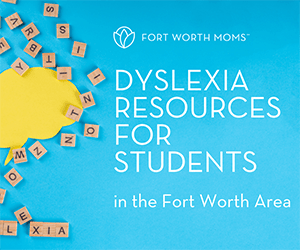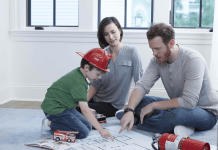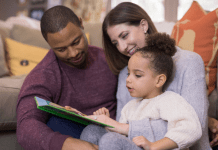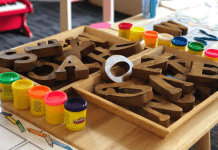Parlez-vous français? I don’t, but I’m hoping my son will.
I’ve always admired my friends who speak multiple languages. Especially because I’ve struggled through both of my own attempts; how do you say “disaster” in French and “nice try” in Italian? (“Désastre” and “bel tentativo” if you’re really wondering.) To be honest, multilingual people impress me. I instantly view them as intellectual, worldly, and master communicators. What I now know is there’s some substance to those first impressions. The Center for Applied Linguistics cites some of the benefits of multilingualism as:
- The ability to think more flexibly, which can improve problem-solving skills.
- Improved sensitivity to language – and better listening skills, to boot!
- A better understanding of one’s native language.
- The opportunity to communicate with people one wouldn’t otherwise have a chance to know (including family members who speak another language exclusively).
- Opens the door to other cultures, international travel, and job opportunities.
- Has a positive effect on intellectual growth and overall mental development.
- The chance to impress future dating partners (okay, that one I added).
I have some experience on the last point, as my husband grew up speaking three languages, the newest of which is English. He originally hails from Haiti, where his first and second languages are French and Haitian Creole. It is through him and my in-laws that I am often reminded that America is one of the few places in the world where knowing a second language isn’t almost mandatory. But, more important than keeping up with the rest of the world, we want our son to know both sides of his cultural heritage, and that means speaking English and French.
And it seems we’re not alone.
For many first generation immigrants, raising bilingual children is the only way to guarantee the next generation will be able to communicate with grandparents and other family members who still live in the home country. And that’s the case for us too.
So, I was sold on raising our son in a multilingual environment. But is it really that easy? I dipped into the research to find out, and learned that many of my assumptions about raising bilingual children were misguided. For example, I thought that learning two languages simultaneously would be overwhelming to a child who’s just beginning to understand the complexities of English. MYTH! Noam Chomsky, the famed linguist at MIT, confirms that picking up language is much easier for children than for adults. In fact, we all have “critical periods,” times during which developing certain skills is easier than at any other time in life. For language, that period is from birth to puberty. But we almost didn’t need Noam to tell us that. Any mother of young children can attest to the incredible speed with which kids pick up new words (and the funny vocal missteps that inevitably pop up along the way)!
After scouring research for my own family’s journey, these are the top five points we’ll be keeping in mind:
Exposure, Exposure, Exposure!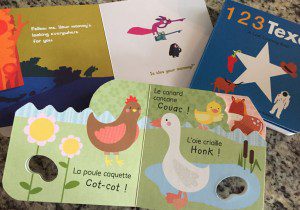
The young brain is like a sponge, so the more it’s exposed to a second language the more likely it will be to “soak it up.” It seems the magic figure is 30 percent, meaning a child needs to be exposed to each language at least 30 percent of his or her waking hours to learn it fluently. We are lucky my husband’s French-speaking mother has offered to provide childcare during the workweek. 30 percent? Check!
Need It, or Lose It
Little brains are great at prioritizing. What they don’t need, they don’t learn. The same seems to be true of learning a second language. If a child needs the second language to sing songs with a loving grandparent, or understand that super cool book about farm animals, she or he will be more motivated to learn it.
Mix It Up
Ever see the movie Spanglish? Yep, it’s normal for multilingual children (and adults!) to mix their languages once in a while. If parents stay the course, they’ll find their children naturally sort out when and to whom they should speak each language.
Patience Pays Off
While bilingual children tend to say their first word later than monolingual children, they are still well within the normal range. So, don’t get nervous if your best friend’s kiddo said “mama” at 11 months and your little one is 13 months without a peep; it takes time to recognize that you’re “mama,” “madre,” and “mum.”
There Are Many “Right” Ways
While some have offered “one-parent, one-language” as the best approach to helping children learn two languages, there is no evidence supporting this method as tops. Rather, it seems the best approach is whatever feels comfortable and natural to each parent and family.
At three months old, our son isn’t speaking much of anything intelligible yet. But, whether his first words are English or French, I imagine there will be few more thrilling moments than that communication.




